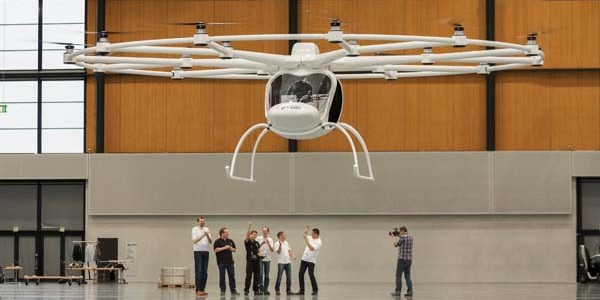Designed and manufactured in Germany, the e-volo’s Volocopter VC200 is a revolution for general aviation. An environmentally friendly and emissions-free 2-place multirotor helicopter, its designers say it’s not only safer and simpler than normal helicopter designs, but also cleaner for the environment. Instead of being powered by an internal combustion engine or a turbine engine, the Volocopter has 18 electrically driven rotors to propel it.
Above: The VC200 is assembled using several quick-connected molded components
First flown in late 2013, the first test flights were conducted in an enclosed arena in Karlsruhe, Germany. With multiple flights lasting several minutes and nearly reaching the 70-plus-foot-high ceiling. Exceeding all expectations, the VC200 made a number of smooth takeoffs and landings. Due to elaborate flight performance simulations at the Stuttgart University before the successful first test flight, the development team already knew the VC200 would be easy to fly. It exhibited incredibly quiet sound levels and absolutely no noticeable vibrations during its powered flights. Using extremely lightweight and sturdy, molded carbon-fiber structures, the multi-rotor craft has a new sprung strut landing gear, which also performed extremely well.
Above: The design team and test flight team pose with the VD200
With a Federal Ministry of Economics and Technology grant of 2 million Euros, e-volo is now working together with an industry research syndicate to refine and produce a production version of the VC200. As it stands, the multi-rotor craft will be granted a provisional airworthiness certificate after having undergone extensive endurance testing. At the end of the trial program, a prototype certification will then be granted for the newly created ultra-light rotor aircraft category. This will all eventually lead to future serial production.
The final design aim for the two-seater VC200 Volocopter is to ultimately have a cruise speed of at least 100 km/h, a flight altitude of up to 6,500 feet, a maximum takeoff weight of 450kg, and a flight time of more than one hour before requiring recharging.
The future of multirotor transportation is here!





















